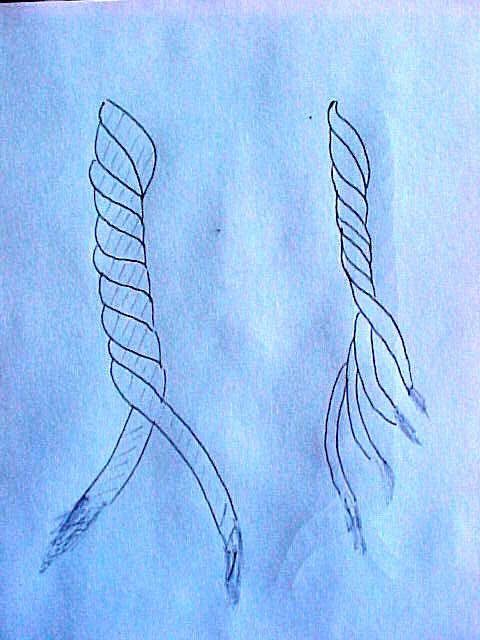 Illustration 1.
Illustration 1.In rug exhibitions and rug books we've all seen (and often ignored) the technical details which follow the names and sizes of each pictured or exhibited rug. They are comprised of a short list of letters and numbers, which will read something like this:
Name, age and size of rug
Warp: WW Z2S
Weft: RW Z 2-3 shoots
Knot: Wool Z2 Symmetrical 5H x 6V 30 psi
Ends: 1 1/2" red wool kilim
Sides: 4 cord yellow selvage
This above translates roughly as follows:
White wool warp, red weft, fairly course weave with red kilim ends and a yellow 4 cord selvage. The details tell us that the warp is 2 ply and the weft is single ply, (which indicates the rug is probably Turkish). The yellow selvage would suggest the rug was made in the Konya region of Turkey because yellow 4 cord selvages are common in this type of rug.
Spelled out the technical details say: White 2 ply wool warp Z spun and S plied Red single ply weft Z spun S plied, 2 to 3 shoots between rows of knots Pile made up of 2 strands of single ply wool, 5 horizontal and six vertical knots per inch or 30 knots per square inch. 1 1/2 inch wool, kilim ends of red dyed wool Sides finished with yellow wool wrapped around batches of warps, making a 4 cord selvage.
 Illustration 1.
Illustration 1.
The above photo shows two warps--the first two ply, and the second 4 ply, and how it looks when the individual warp is untwisted. The twist of both follows the "S" or "\" diagonal slant as shown in the picture. If a warp is S plied, it is virtually always Z spun. Z spun S plied warp is the norm. A rug spun and plied in the opposite direction, (S spun Z plied) is very unusual in antique rugs--indicating probably either a Mamluk or Cairene rug.
Wool warps are characterized by a furry feel; cotton by a stringy, smooth one.
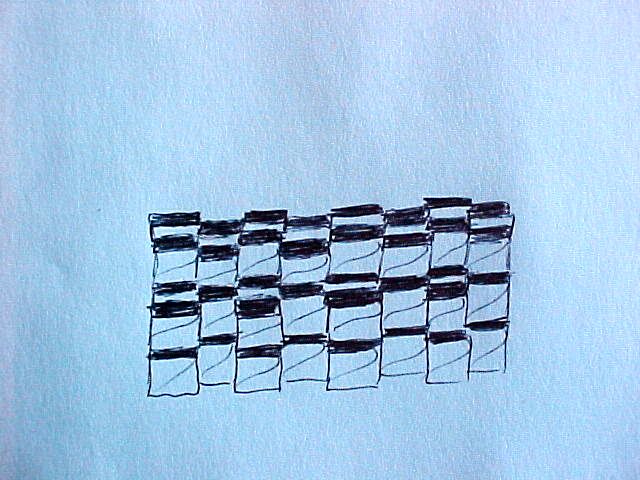 Illustration 2.
Illustration 2.
The dark lines in the illustration above indicate, from the bottom up, shoots of 2, then 3 and finally 4 wefts between rows of knots. Although in the first line the two strands seem to be one straight row of material, the weft alternates, crossing over and under alternate warps so they are in actuality two alternating strands. Single strands of weft are also used occasionally, especially in Persian Hamadans. This would show as a line of color over every other warp.
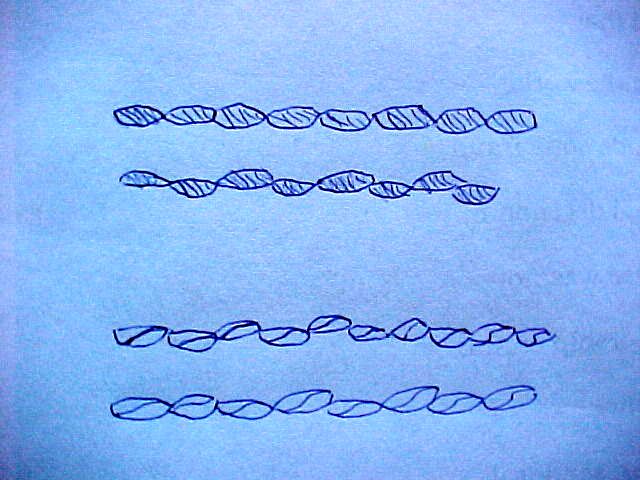 Illustration 3.
Illustration 3.
The picture above illustrates single ply weft (top two rows) and double ply weft (bottom two). Note that the weft strands are divided into two parts in the double ply weft.
In illustration 4 the top row shows three symmetrical knots. The bottom two rows show asymmetrical knots open to the left.
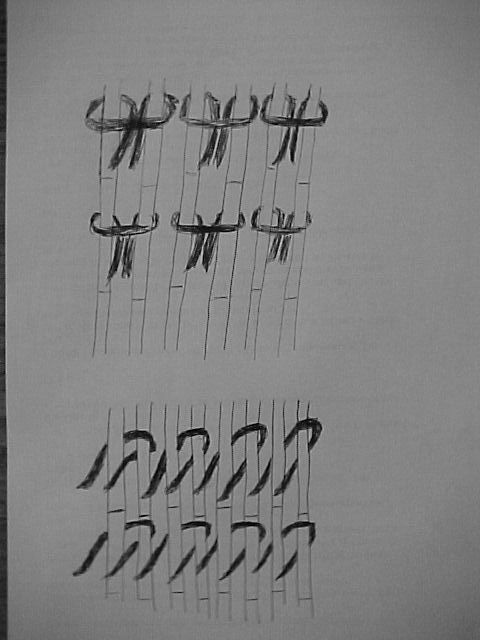 Illustration 4.
Illustration 4.
If one analyzes groups of collectable 18th and 19th century rugs according to their technical details, a number of interesting distinctions emerge. Among them: Turkish rugs almost always have 2 ply woolen warp and single ply dyed woolen weft. Caucasian rugs, on the other hand, most frequently have 3 ply woolen warp and 2 ply woolen weft. Persian rugs frequently have 4 and 5 ply warps. Weavers often use cotton rather than wool for both warp and weft.
In Turkmen rugs, Tekke, Chaudor and Ersari rugs have asymmetrical knots open to the right, but Salors and a few other rare types have asymmetrical knots open to the left. Saryk and Yomud rugs can usually be distinguished by their symmetrical knots, although Yomuds occasionally also have the asymmetrical knot. The end finishes of rugs also aid us in distinguishing one type rug from another.
Kilim ends and side selvages of 2-4 cords of colored wool are frequently found in both Turkish and Caucasian rugs.
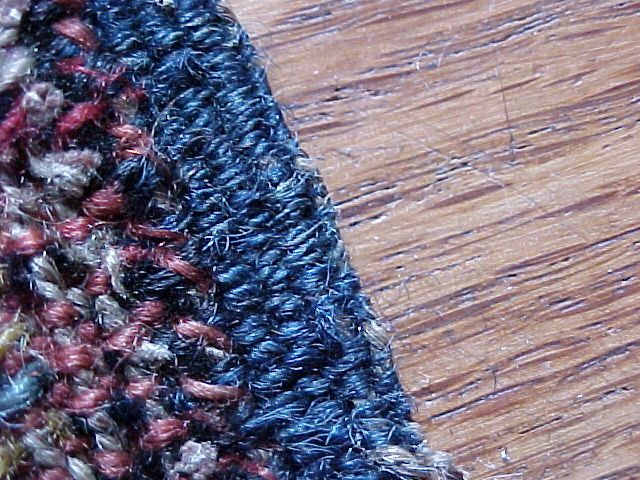
Illustration 5.
The photograph above shows a 4-cord blue selvage and single ply red weft, indicating, despite some Caucasian design elements, that it is a Turkish rug.